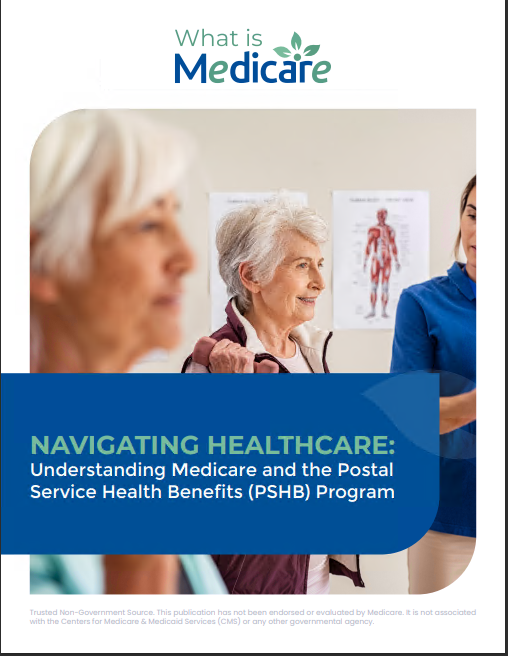Introduction: Navigating Medicare Costs
Understanding Medicare costs is essential for beneficiaries to effectively manage their healthcare expenses and make informed decisions about their coverage options. Medicare expenses consist of various components, including premiums, deductibles, coinsurance, and copayments, which can impact individuals’ out-of-pocket spending for medical services and prescription drugs. In this guide, we’ll delve into the details of Medicare costs, empowering beneficiaries to navigate the program with confidence and financial awareness.
Overview of Medicare Costs
Medicare costs encompass several components that beneficiaries may encounter when accessing healthcare services and prescription medications. The primary components of Medicare expenses include:
- Premiums: Medicare Part A (Hospital Insurance) and Medicare Part B (Medical Insurance) may require beneficiaries to pay monthly premiums. Part A premiums are typically based on individuals’ work history, while Part B premiums are based on income levels and may be subject to income-related monthly adjustment amounts (IRMAA) for higher-income earners.
- Deductibles: Medicare Part A and Part B have annual deductibles that beneficiaries must meet before Medicare coverage begins to pay for eligible services. Deductible amounts may vary each year and can impact beneficiaries’ initial out-of-pocket expenses for medical care.
- Coinsurance: Coinsurance refers to the percentage of the Medicare-approved amount for covered services that beneficiaries are responsible for paying after meeting their deductible. Coinsurance amounts may apply to hospital stays, medical services, and durable medical equipment, among other services covered by Medicare.
- Copayments: Copayments are fixed dollar amounts that beneficiaries are required to pay for specific healthcare services, such as doctor visits, outpatient procedures, and prescription medications. Copayment amounts may vary depending on the type of service and the specific Medicare plan.
Understanding these components of Medicare costs allows beneficiaries to anticipate their out-of-pocket expenses and plan accordingly for their healthcare needs.
Medicare Part A typically does not require beneficiaries to pay monthly premiums if they or their spouse have paid Medicare taxes while working. However, individuals who are not eligible for premium-free Part A coverage may need to pay a monthly premium based on their work history. In addition to premiums, Part A costs may include:
- Hospital Deductible: Beneficiaries are responsible for a deductible amount for each benefit period when admitted to a hospital under Medicare Part A coverage. The deductible amount may change each year and is subject to inflation adjustments.
- Hospital Coinsurance: After meeting the deductible, beneficiaries may be responsible for coinsurance for hospital stays lasting longer than 60 days. Coinsurance amounts increase for extended hospital stays and may apply to skilled nursing facility care as well.
Understanding Part A costs helps beneficiaries anticipate their financial obligations for hospital and inpatient care under the Medicare program.
Medicare Part B requires beneficiaries to pay a monthly premium for medical insurance coverage. The standard Part B premium amount may vary each year and is based on beneficiaries’ income levels. In addition to monthly premiums, Part B costs may include:
- Annual Deductible: Beneficiaries are responsible for meeting an annual deductible amount before Medicare coverage begins to pay for eligible medical services and supplies under Part B. Deductible amounts are subject to change annually.
- Coinsurance: After meeting the deductible, beneficiaries typically pay 20% coinsurance for Medicare-approved services received from healthcare providers. Coinsurance amounts may vary depending on the type of service and the specific healthcare provider.
Understanding Part B costs allows beneficiaries to budget for their monthly premiums and anticipate their out-of-pocket expenses for medical services covered under Part B.
Medicare Part D provides prescription drug coverage through private insurance plans approved by Medicare. Part D costs may include:
- Monthly Premiums: Beneficiaries enrolled in a Medicare Part D plan typically pay a monthly premium to maintain prescription drug coverage. Premium amounts may vary depending on the specific Part D plan chosen and the beneficiary’s location.
- Deductibles: Some Part D plans may have an annual deductible amount that beneficiaries must meet before the plan begins to cover prescription drug costs. Deductible amounts vary by plan and may apply to brand-name and generic drugs differently.
- Coinsurance or Copayments: Beneficiaries enrolled in a Part D plan are responsible for paying a portion of their prescription drug costs through coinsurance or copayments. These out-of-pocket costs may vary depending on the drug’s tier and the specific plan’s cost-sharing structure.
Understanding Part D costs helps beneficiaries select a prescription drug plan that aligns with their medication needs and budgetary considerations.
Strategies to Manage Medicare Costs
To manage Medicare costs effectively, beneficiaries can consider the following strategies:
- Compare Plan Options: Compare Medicare Advantage plans and standalone Part D plans to find coverage options that offer the benefits you need at the most affordable cost.
- Utilize Preventive Services: Take advantage of Medicare’s coverage for preventive services, such as annual wellness visits, screenings, and vaccinations, to detect and prevent health issues early.
- Review Medication Formularies: Review the formularies of Part D plans to ensure your prescription drugs are covered at a reasonable cost. Consider switching to generic medications or therapeutic alternatives to lower drug expenses if possible.
- Explore Cost-Saving Programs: Explore programs such as Extra Help and Medicare Savings Programs that offer financial assistance to beneficiaries with limited incomes and resources, helping reduce out-of-pocket healthcare expenses.
By implementing these strategies, beneficiaries can effectively manage their Medicare costs and ensure access to quality healthcare coverage without incurring excessive financial burdens.
Conclusion: Empowering Beneficiaries with Financial Awareness
Understanding Medicare costs is essential for beneficiaries to make informed decisions about their healthcare coverage and manage their out-of-pocket expenses effectively. By familiarizing themselves with the various components of Medicare expenses, including premiums, deductibles, coinsurance, and copayments, beneficiaries can anticipate their financial obligations and plan accordingly for their healthcare needs. Empower yourself with financial awareness, explore cost-saving strategies, and choose Medicare coverage options that align with your healthcare needs and budgetary considerations.
Ready to learn more about managing your Medicare costs effectively? Download our free eBook. Connect with our licensed insurance agents today to explore Medicare plan options and find coverage that meets your healthcare needs while minimizing your out-of-pocket expenses. Your health and financial well-being are our top priorities—let us help you navigate Medicare costs with confidence and peace of mind.



